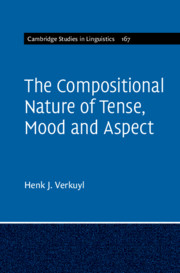Refine search
Actions for selected content:
33 results
7 - Severity and Complexity
-
- Book:
- Appearance, Disability and the Law
- Published online:
- 31 July 2025
- Print publication:
- 14 August 2025, pp 101-114
-
- Chapter
- Export citation
6 - Implications for Political Legitimacy and the Theory of Legitimacy
- from Part II - Political Legitimacy and Theory of Politics
-
- Book:
- The Law and Politics of International Legitimacy
- Published online:
- 14 July 2025
- Print publication:
- 24 July 2025, pp 92-98
-
- Chapter
- Export citation
Case 17 - Multifocal Motor Neuropathy (MMN)
- from Peripheral Neuropathies
-
- Book:
- Neuromuscular Disease
- Published online:
- 29 November 2024
- Print publication:
- 19 December 2024, pp 118-121
-
- Chapter
- Export citation
1 - The Problem
- from Part I - Symmetry Explained
-
- Book:
- Constitutional Symmetry
- Published online:
- 14 November 2024
- Print publication:
- 21 November 2024, pp 13-34
-
- Chapter
- Export citation
Mainstream and deviating ideologies in Japanese gubernatorial elections
-
- Journal:
- International Journal of Asian Studies , First View
- Published online by Cambridge University Press:
- 12 September 2024, pp. 1-17
-
- Article
-
- You have access
- Open access
- HTML
- Export citation
Incremental Lobby Reform: Elite Interests and Governance Policies
-
- Journal:
- Journal of Policy History / Volume 35 / Issue 3 / July 2023
- Published online by Cambridge University Press:
- 07 July 2023, pp. 333-353
-
- Article
-
- You have access
- Open access
- HTML
- Export citation
3 - Property Theory and the State
- from Part I - Squatting and the State
-
- Book:
- Squatting and the State
- Published online:
- 11 August 2022
- Print publication:
- 25 August 2022, pp 143-164
-
- Chapter
- Export citation
Introduction
-
- Book:
- Victorian Women Writers and the Other Germany
- Published online:
- 02 June 2022
- Print publication:
- 09 June 2022, pp 1-12
-
- Chapter
- Export citation
JUSTIFYING TAXATION
-
- Journal:
- Social Philosophy and Policy / Volume 39 / Issue 1 / Summer 2022
- Published online by Cambridge University Press:
- 14 August 2023, pp. 1-10
- Print publication:
- Summer 2022
-
- Article
-
- You have access
- Open access
- HTML
- Export citation
4 - Sedition
-
- Book:
- Hidden Histories of Pakistan
- Published online:
- 06 January 2022
- Print publication:
- 20 January 2022, pp 151-198
-
- Chapter
- Export citation
3 - Obscenity
-
- Book:
- Hidden Histories of Pakistan
- Published online:
- 06 January 2022
- Print publication:
- 20 January 2022, pp 94-150
-
- Chapter
- Export citation
2 - Blasphemy
-
- Book:
- Hidden Histories of Pakistan
- Published online:
- 06 January 2022
- Print publication:
- 20 January 2022, pp 44-93
-
- Chapter
- Export citation
1 - Introduction
-
- Book:
- Hidden Histories of Pakistan
- Published online:
- 06 January 2022
- Print publication:
- 20 January 2022, pp 1-43
-
- Chapter
- Export citation
4 - Naive Physics and Aspectual Composition
-
- Book:
- The Compositional Nature of Tense, Mood and Aspect
- Published online:
- 08 October 2021
- Print publication:
- 14 October 2021, pp 93-130
-
- Chapter
- Export citation

The Compositional Nature of Tense, Mood and Aspect
-
- Published online:
- 08 October 2021
- Print publication:
- 14 October 2021
6 - A New Sense of Privacy
- from Part I - Privacy
-
- Book:
- Privacy in the Age of Neuroscience
- Published online:
- 09 April 2021
- Print publication:
- 15 April 2021, pp 175-196
-
- Chapter
- Export citation
4 - Physically educated: Developing children’s health and wellbeing through learning in the physical dimension
- from Part 2 - Dimensions of health and wellbeing
-
-
- Book:
- Health and Wellbeing in Childhood
- Published online:
- 30 November 2020
- Print publication:
- 16 June 2020, pp 55-76
-
- Chapter
- Export citation
4 - Physically educated: Developing children’s health and wellbeing through learning in the physical dimension
- from Part 2 - Dimensions of health and wellbeing
-
-
- Book:
- Health and Wellbeing in Childhood
- Published online:
- 30 November 2020
- Print publication:
- 16 June 2020, pp 55-76
-
- Chapter
- Export citation
Chapter Four - Gravity Waves on Water
-
- Book:
- Ocean Waves and Oscillating Systems
- Published online:
- 12 May 2020
- Print publication:
- 28 May 2020, pp 62-120
-
- Chapter
- Export citation
Stirrings of Revolt: Regressive Levies, the Pocketbook Squeeze, and the 1960s Roots of the 1970s Tax Revolt
-
- Journal:
- Journal of Policy History / Volume 32 / Issue 2 / April 2020
- Published online by Cambridge University Press:
- 05 March 2020, pp. 105-150
-
- Article
- Export citation
